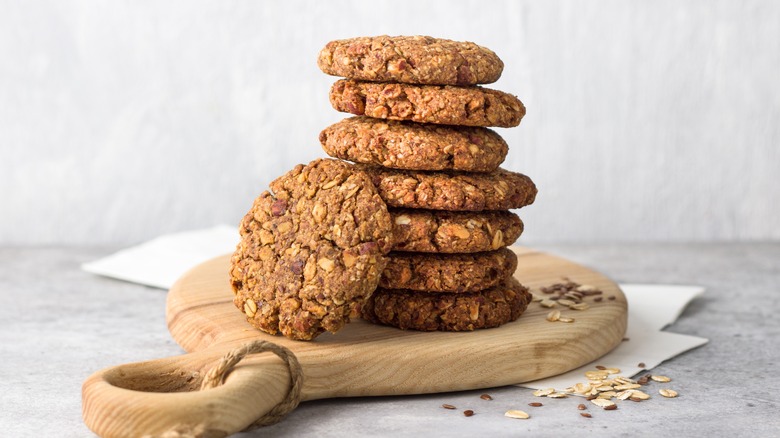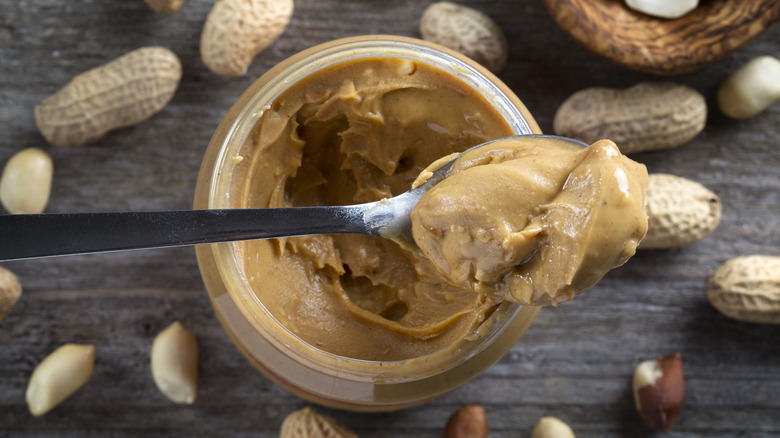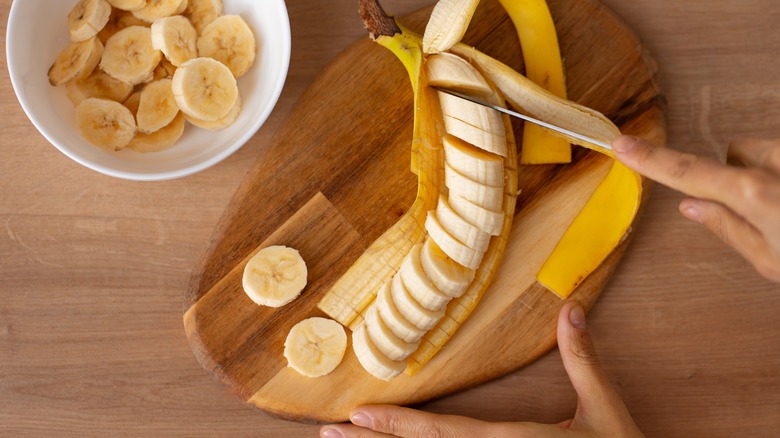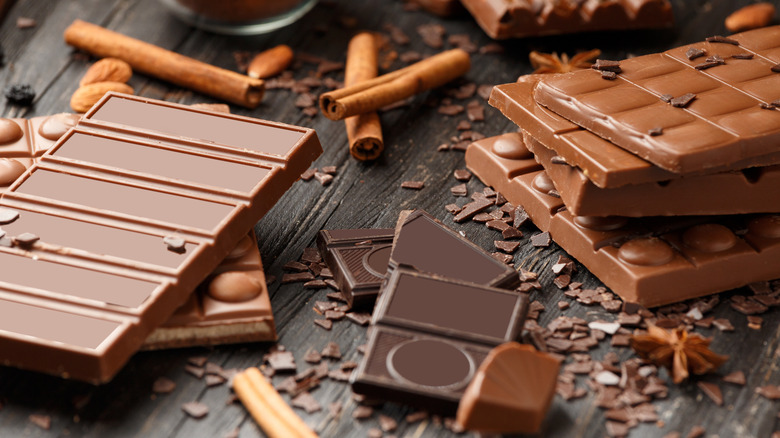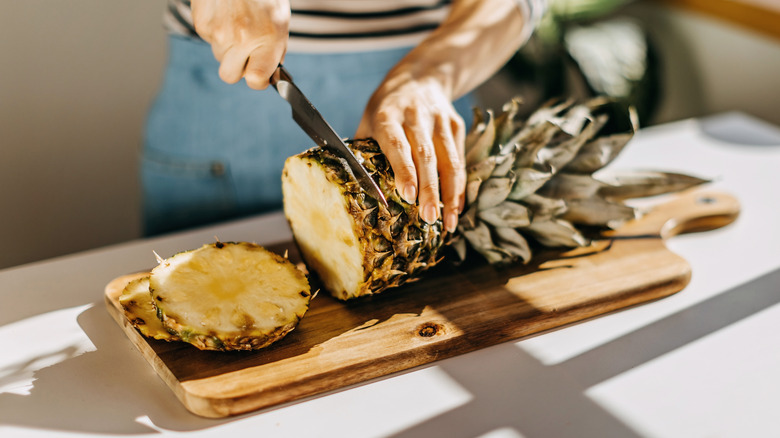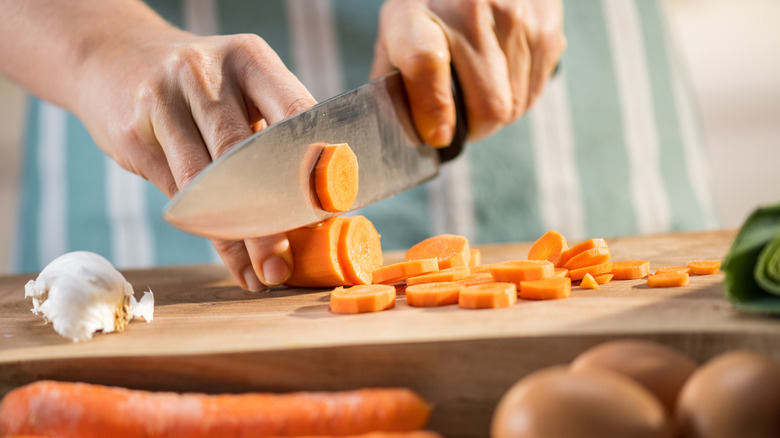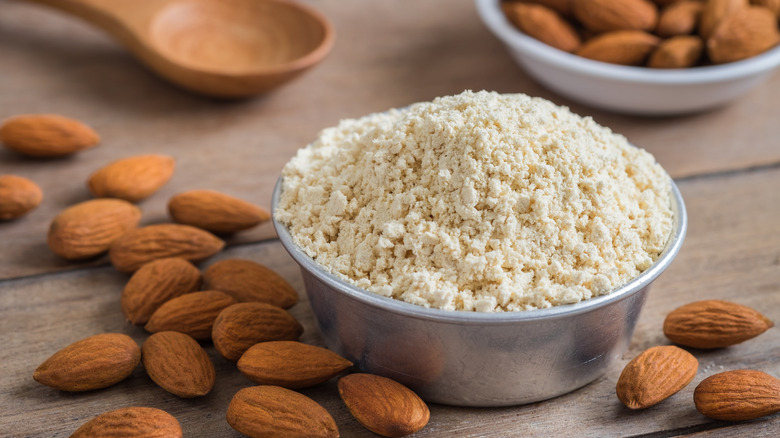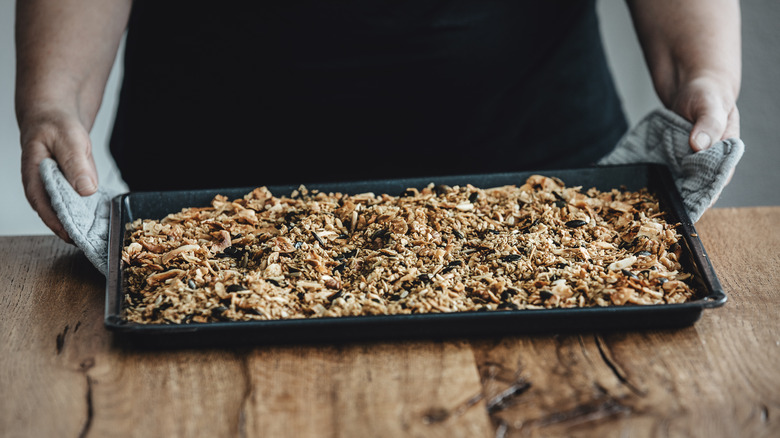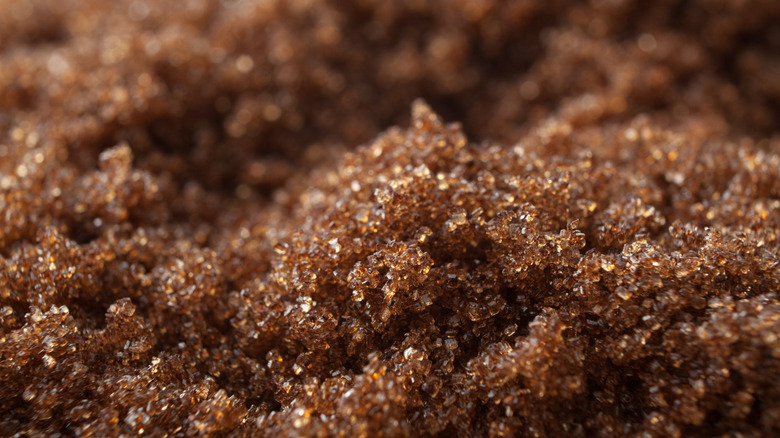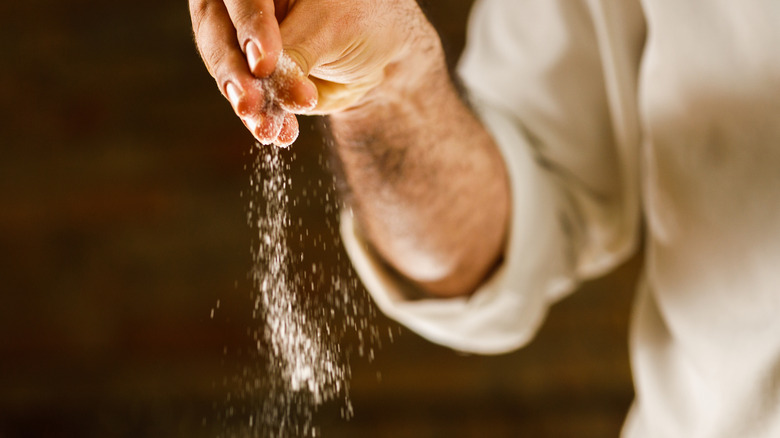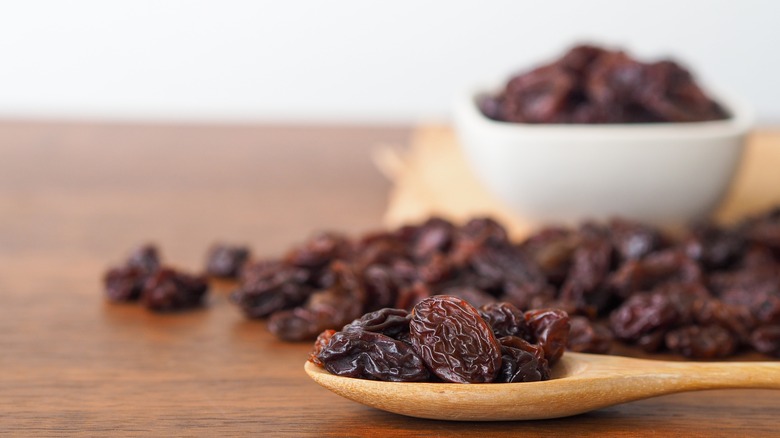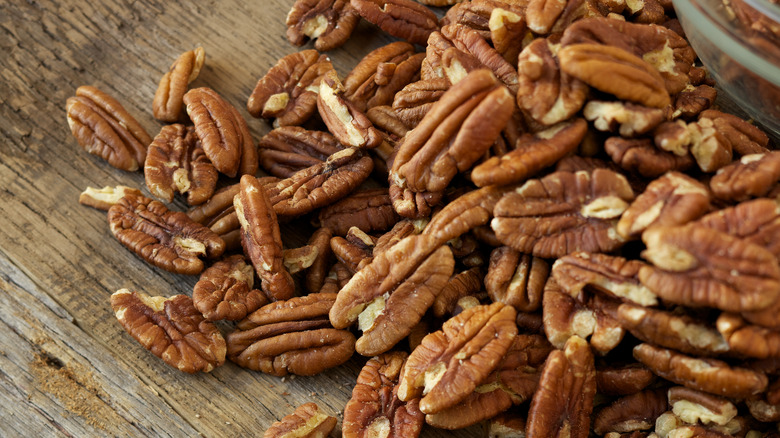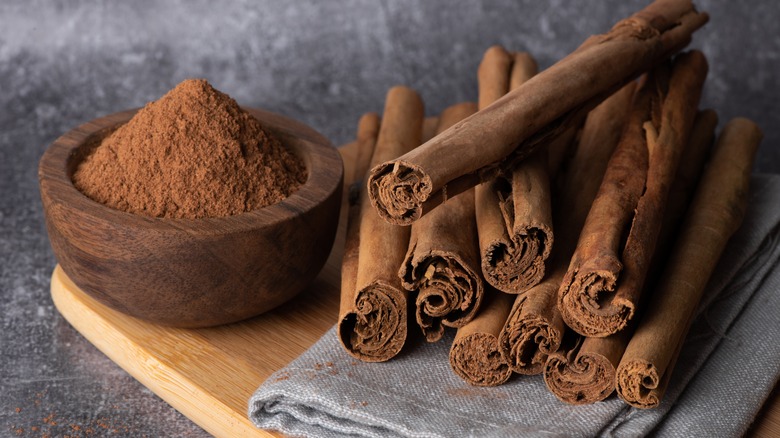Ingredients That Will Make Your Oatmeal Cookies Irresistible
Traditional, comforting, and incredibly easy to make, oatmeal cookies are a baking staple for many home chefs. Most ingredients are super accessible, and there is almost never a need for any kind of fancy equipment — just a mixing bowl and a good spoon will do. Even better, since there is not typically a need to chill the dough before baking in order for oatmeal cookies to maintain their shape, the start to finish process for these delectable morsels is relatively speedy.
Whether the preference is textured and crunchy, soft and chewy, or crispy with a satisfying snap, there is a vast array of oatmeal cookie recipes that suit every palate and level of skill. Sometimes, though, adding a twist can make a tried and true classic even more special. Unique flavor combinations or techniques can give this otherwise conventional comfort food a major upgrade without sacrificing taste or ease.
Peanut Butter
Adding a few tablespoons of your favorite brand of peanut butter to an oatmeal cookie recipe is a quick and simple way to incorporate both flavor and a chewy texture. While there are plenty of recipes for peanut butter oatmeal cookies, it's just as easy to use peanut butter in a standard recipe for plain oatmeal cookies — or oats in a peanut butter cookie recipe!
One of the simplest and most effective methods is to substitute half of the butter of a favorite oatmeal cookie recipe with peanut butter in order to maintain a similar consistency when mixing the dough and shaping the cookies. This will also keep the baking time the same, and there will be no need to worry about changing the oven temperature. The rest of the process will remain very much the same while swapping in some peanut butter will give the cookies mouthwatering depth of flavor.
Bananas
Ever had an overripe banana sit on the kitchen counter for a day too long and wondered what in the world to do with it? Not enough for banana bread, but still a little too brown to just go ahead and eat on its own? The perfect in-between is to mash it up and add it to some oatmeal cookie dough for a delicious and soft-textured treat. Bananas are an uncommon cookie ingredient, but this combination is as delicious as it is healthy.
Not only are bananas full of potassium, they are cholesterol- and sodium-free with a robust dose of fiber, making them a natural pair with fiber-rich oats that contain a multitude of vitamins, minerals, and antioxidants (via Healthline). To make a batch of banana oatmeal cookies even healthier, try using honey or maple syrup in place of the usual measure of sugar to concoct a yummy yet wholesome and diet-friendly dessert.
Chocolate
Oatmeal cookies and chocolate chip cookies are perhaps two of the most classic cookie recipes out there, and combining the two is an easy win. Chocolate chips can easily be added to most oatmeal cookie recipes, even in concert with some of the other ingredients on this list (I recommend either peanut butter or bananas). The same applies to white chocolate, though that will carry a much different flavor.
Alternatively, melted chocolate is another great way to give a batch of oatmeal cookies a decadent flair. A popular Swedish recipe uses melted chocolate — a crispy version of an oatmeal cookie is first dipped into the chocolate and then squished against another cookie to create a dessert-worthy little sandwich. Melted chocolate can also be drizzled on top of a fresh batch of cookies and allowed to harden before eating, or chocolate candies can be pressed into the center of each round of cookie dough before baking.
Pineapple
Hummingbird flavors are favored across all kinds of baking recipes, from cupcakes to cookies — and the combination of deliciously tropical flavors really can't be beat. While most people may not think oatmeal and pineapple are a natural pairing, just wait until you give it a try. Pineapple offers a hint of acidity and a punchy, bright flavor while oats bring a softer, more nutty profile. It's important, though, to use either crushed pineapple or very small pieces and to squeeze as much water out of them as possible before mixing into the dough to ensure the cookies don't come out too wet.
Adding pineapple to oatmeal cookies also works well alongside a handful of other ingredient suggestions on this list, including bananas, cinnamon, pecans, and even salt. All of those together (as well as some coconut) create a hummingbird oatmeal cookie that can be topped with rich cream cheese frosting, too. With all of the fruit and nuts packed into the cookie itself, the top deserves a layer of pure sugar, doesn't it?
Carrots
A carrot cake inspired oatmeal cookie recipe offers a dessert that's both flavorful and health-conscious without compromising on texture. Not only do carrots provide a lovely natural sweetness that isn't overpowering or sickly, they are also packed with beta-carotene that turns into vitamin A in the human body. You might have heard that eating carrots will aid your eyesight, and beta-carotene can indeed improve not just the eyes but the immune system (via WebMD). Okay, so maybe you'd have to eat tons of these "carrot" cookies to walk away with better eyes, but still! They also give skin a healthy glow.
Adding shredded carrots to oatmeal cookies alongside cinnamon and vanilla extract creates a cake-like experience without the richness of finishing a whole slice. With naturally occurring sugars but almost no starch, carrots are potassium, calcium, and fiber rich with an extremely low carb count. Even if creating healthier alternatives isn't high on your list of priorities when it comes to cookie recipes, carrots offer plenty of benefits.
Almond Flour
Foodies following a gluten-free diet or anyone else looking for alternatives to traditional wheat flour will appreciate the option of using ground almonds to bake up sweet treats. Almond flour can easily be purchased online or found in most grocery stores, but it can also be made at home by pulsing whole or sliced almonds in a blender or food processor until ground to a fine powder. I recommend also sifting ground almonds through a fine mesh sieve in order to separate out any too-big or uneven chunks of almond.
Making oatmeal cookies with almond flour won't eliminate gluten completely, however — oats can have gluten due to cross contamination. But almond flour does help cookies remain soft and moist long after they are finished in the oven. As an added benefit, almonds are full of healthy fats as well as a bit of fiber and protein, making them a nutritional nutty ingredient.
Toasted Oats
This one is more of an enhancement than an added ingredient. Oats are needed in order to make oatmeal cookies no matter what, but toasting them before mixing them into a dough adds a little something special that regular oats lack. The process is incredibly simple and straightforward. If toasting in the oven, spread a thin layer of oats onto a baking tray, and bake between 325 and 350 degree F for about 10 to 12 minutes until the oats are golden brown. If toasting on the stovetop, add the oats to a skillet with either butter or a neutral oil, and using medium-high heat, toss and turn the oats with a spatula until they've reached a richer color and a nutty aroma.
Steel cut oats, in particular, can often be a little tougher to cook than traditional rolled oats, and toasting them first gives steel cut oats a bit of a boost that help speed things along. Rolled oats will also benefit from toasting as the process gives a crunchier texture.
Brown sugar
For many, this will seem like a no-brainer, but for those who haven't seen the light yet, brown sugar is an exceptionally tasty alternative to regular sugar that adds both flavor and moisture for a richer, more flavorful cookie. Swapping white sugar for brown in an oatmeal cookie recipe can bring out the deeper notes in the oats and any additional ingredients like raisins or nuts. Plenty of oatmeal cookie recipes are wise enough to use both types of sugar at once.
Low on brown sugar with no time to run out to the store? That's a surprisingly easy fix. Add 1 cup of white granulated sugar to a bowl with 1 teaspoon of molasses, then mix them together slowly until they are fully combined. Voila! Brown sugar ready to be packed into a measuring cup and dumped into a mixing bowl for chewy and delicious oatmeal cookies.
Sea salt
Sometimes, it's how the recipe is finished off that matters when adding a new element. As soon as the cookies are fresh out of the oven, sprinkle a pinch of sea salt over the top of each one for a savory component that will not detract from the cookies' natural sweetness. In fact, adding a touch of salt will often enhance the sweeter notes.
Curious about the distinction between sea salt and other types of salt? Sea salt, made from evaporating salt water, is less processed than table salt and has larger granules than iodized table salt — though not typically as big as Kosher salt or flaky salt. And sea salt brings a flavorful, briny quality to a wide array of dishes, even desserts. The perfect final touch for a plate of oven-warm oatmeal cookies. And if you're adding a little chocolate to those cookies, you're in for a real treat!
Raisins
Raisins could never be left off a list of ingredients to add to oatmeal cookies. With the inherently crunchy and crispy texture of oats, raisins are the ideal balance, giving a level of not only fruity sweetness, but a burst of moisture and softness for contrast. Cholesterol-free, fat-free, and low in sodium, raisins have a little fiber and a little protein. They are, however, very high in antioxidants and contain a bit of potassium and magnesium.
An added bonus? Raisins are cheaper than grapes, but the drying process does not diminish their nutritional value. They pack a punch even in the tiniest form. If you are looking for a more unique way to jazz up an oatmeal cookie recipe using raisins, try adding a mixture of black raisins and golden raisins or even sultanas and currants. They also pair very well with other dry ingredients like walnuts and pecans.
Nuts
Two of the most common nut options to incorporate into a wide variety of cookie recipes are pecans and walnuts, but there are dozens more that suit oatmeal cookies just fine, like cashews, macadamia nuts, or even hazelnuts. Nut chunks and pieces pair very well with raisins and other softer textured ingredient additions, and they often help bring out the naturally sweeter notes in oats.
While peanuts, almonds, and pistachios will have the highest protein count, pistachios and cashews will be lowest in fat and have the fewest calories. Almonds, though, are richest in calcium, and hazelnuts contain the most fiber. Each nutty option will bring their own signature flavor profile to the party along with their own nutritional values, but all are well-suited to balancing out the oats and adding a little crunch. If you are looking to really up your nut intake, try adding a combination of these with almond flour for the ultimate nut-happy oatmeal cookie.
Cinnamon
A great many of the recipes for oatmeal cookies that I've come across all include at least a small amount of cinnamon, but in my experience, the best ones involve a heavier dose. Cinnamon can flawlessly enhance both the sweeter and the warmer flavors of any cookie, and even mixing in a full 1 or 2 tablespoons won't overpower the dough to an inedible degree. If you're looking to go a step further in your baking, try combining an oatmeal cookie recipe with a snickerdoodle recipe to fully grasp yummy perfection of the oat and cinnamon pairing. A plain oatmeal dough rolled in cinnamon sugar before baking is a great start.
Cinnamon is also known to be full of antioxidants. It is anti-inflammatory, anti-diabetic, antimicrobial, and has been known to reduce both cholesterol and blood sugar levels (via the Journal of Traditional and Complementary Medicine). While it's in good company among the other health-conscious ingredients on this list, this spice may actually top them all across a few categories.

